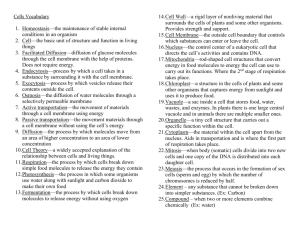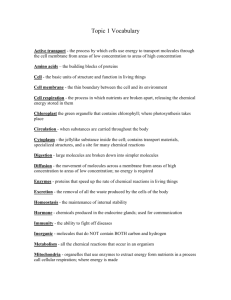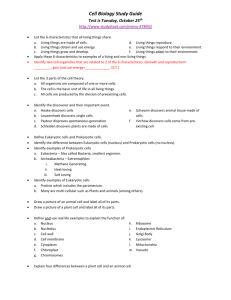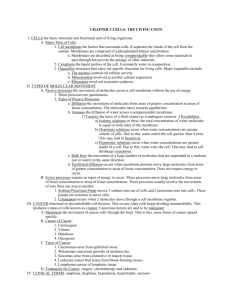Biology: Midterm Review (January 2013)
advertisement
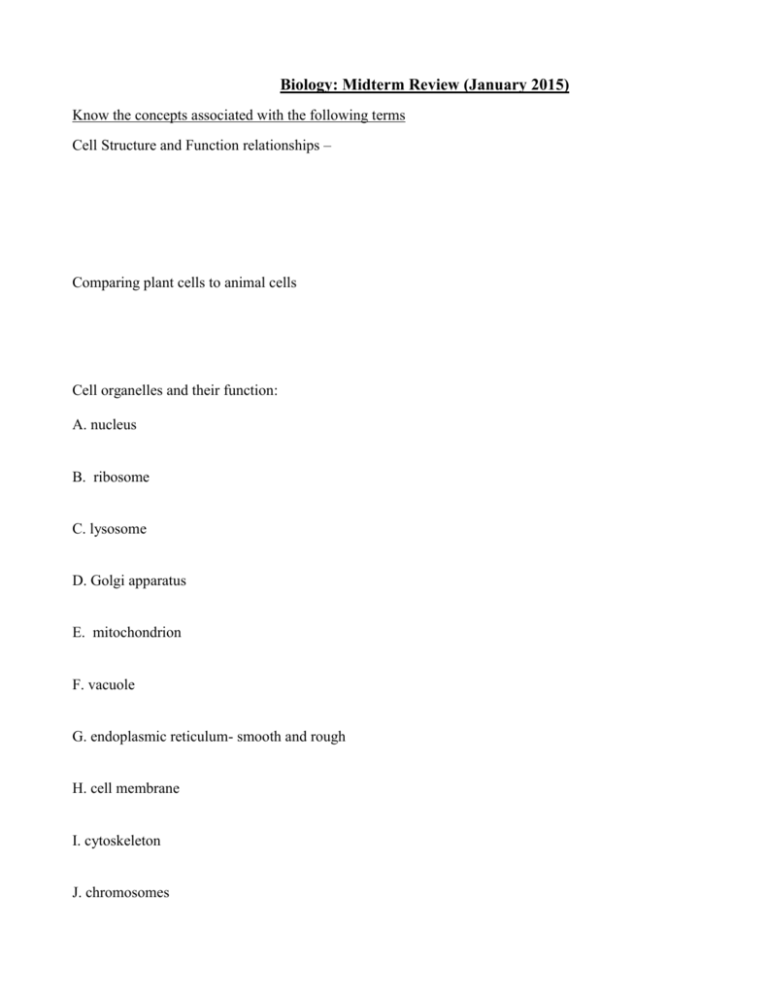
Biology: Midterm Review (January 2015) Know the concepts associated with the following terms Cell Structure and Function relationships – Comparing plant cells to animal cells Cell organelles and their function: A. nucleus B. ribosome C. lysosome D. Golgi apparatus E. mitochondrion F. vacuole G. endoplasmic reticulum- smooth and rough H. cell membrane I. cytoskeleton J. chromosomes K. Nucleolus L. Cilia M. flagella N. Chloroplast Prokaroytic vs. Eukaryotic Differences and similarities between Prokaryotic and Eukaryotic organisms. Examples. A.. nucleoid B. plasmids Cellular Levels of Organization A. tissue B. organ C. organelle D. organism E. organ system Cell Specialization Stem Cells A. Embryonic Stem Cells (ESC) B. Adult Stem Cells (ASC) C. blastocyst D. pluripotent E. multipotent Focusing and using a microscope Cell Membrane and Cell Transport A. Passive transport B. Diffusion C. Osmosis D. Facilitated diffusion E. Examples of Active Transport F. Hypertonic G. Hypotonic H. Isotonic I. semipermeable J. impermeable K. exocytosis L. cytolysis M. plasmolysis N. solute O. solvent P. solution Q. concentration gradient R. carrier molecules S. hydrophilic molecules T. hydrophobic molecules Photosynthesis and Cellular Respiration A. Chlorophyll B. Stroma. C. Granum D. Photosystem E. Thylakoid F. plant pigments G. heterotrophs/consumers H. autotrophs/producers I. photolysis J. electron transport chain K. Light-dependent reaction – reactants/products L. Calvin cycle/light - independent reaction – reactants/products M. Names and roles of molecules in photosynthesis N. Glycolysis O. Kreb’s Cycle/Citric Acid Cycle P. Electron Transport Chain/System Q. Lactic Acid Fermentation R. Alcohol Fermentation S. Compare and contrast aerobic respiration to anaerobic respiration Biological Molecules A. Organic Compound B. Monomer C. Polymer D. Carbohydrate E. Monosaccharide/disaccharide/polysaccharide F. Lipids - general characteristics and examples G. Proteins - general characteristics and examples H. Enzymes (catalyst) and their characteristics, including catalase I.. Glycogen J. Functional groups- carboxyl, amino groups K. Dehydration synthesis and hydrolysis reactions L. Denatured M. Active site N. Substrate O. Coenzyme P. Isomer Q. Benedicts Solution R. iodine test Know the following: 1. Examples of how form follows function. 2. Characteristics of plants and animal cells (compare and contrast) 3. Structure of the cell membrane and the major functions of membranes in general. Fluid Mosiac Model. Explain how molecules move across a cell membrane. 4. Structure of ATP 5. Properties of water
